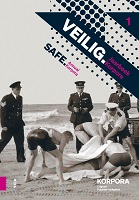Chapter Moord en brand
| dc.contributor.author | Koppers, Gerard | |
| dc.date.accessioned | 2024-03-06T14:05:55Z | |
| dc.date.available | 2024-03-06T14:05:55Z | |
| dc.date.issued | 2024 | |
| dc.identifier | ONIX_20240306_9789048563739_10 | |
| dc.identifier.uri | https://library.oapen.org/handle/20.500.12657/88207 | |
| dc.language | Dutch | |
| dc.subject.classification | thema EDItEUR::1 Place qualifiers::1D Europe::1DD Western Europe::1DDN Netherlands | en_US |
| dc.subject.classification | thema EDItEUR::2 Language qualifiers::2A Indo-European languages::2AC Germanic and Scandinavian languages::2ACD Dutch | en_US |
| dc.subject.classification | thema EDItEUR::N History and Archaeology::NH History::NHT History: specific events and topics::NHTB Social and cultural history | en_US |
| dc.subject.classification | thema EDItEUR::J Society and Social Sciences::JB Society and culture: general::JBF Social and ethical issues | en_US |
| dc.subject.other | fire protection police columns, supra-local assistance, mobile firefighting column, fire prevention police force, fire protection police companies | |
| dc.title | Chapter Moord en brand | |
| dc.type | chapter | |
| oapen.abstract.otherlanguage | After the occupation by German troops in May 1940, the German authorities demanded the Dutch fire service be remodelled in line with their own example. In Germany, firefighting had been a police task since 1938. Fire service columns were formed to stop the spread of large-scale fires after air attacks. A great deal of organisation was needed to deploy the large number of pumps, men and large quantities of water. In the Netherlands two mobile columns were formed, which ultimately comprised about 1200 men in two large units, each consisting of four companies with a total of 223 vehicles. The firefighters were trained in the German way and became highly disciplined. The units were deployed after air raids on Rotterdam, Amsterdam and Haarlem in 1943, and Nijmegen and The Hague in 1944. From February 1944, however, the Dutch units were also sent to help in different German cities under attack. The Dutch fire service columns were stationed in eight depots in The Hague, Rotterdam, Baarn, Weesp, Deurne and Winterswijk. The last of the Dutch column was disbanded and sent to the German Fire Service School in Beeskow near Berlin in September 1944. | |
| oapen.identifier.doi | 10.5117/9789048563739_koppers | |
| oapen.relation.isPublishedBy | dd3d1a33-0ac2-4cfe-a101-355ae1bd857a | |
| oapen.relation.isPartOfBook | 775b9ce2-6767-4643-8091-09792a1ba9b3 | * |
| oapen.relation.isbn | 9789048563739 | |
| oapen.relation.isbn | 9789048563746 | |
| oapen.pages | 32 | |
| oapen.place.publication | Amsterdam |

